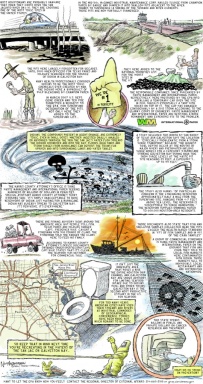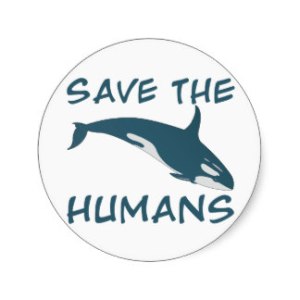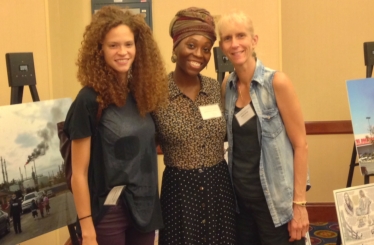Psalm 24:1 The Earth is the Lord’s and the fullness thereof, the world and they that live therein
Romans 8:19 All creation awaits the manifestation of the sons of God … 21 When creation itself shall be delivered from the bondage of corruption into the glorious liberty of the children of God.
Isaiah 24:4 The earth howls and sits in mourning, the land wails and sits in mourning … 5 The earth also is defiled like its inhabitants; because they have transgressed the laws, changed the ordinance, broken the everlasting covenant. 6 Therefore the earth shall sit in mourning, and they that dwell therein are desolate …
Jeremiah 2:7 And I brought you into a land of plenty, to eat its fruit and its goodness; but when you came in you defiled my land and made my heritage an abomination
Revelations 11:17 Saying, We give thee thanks, O Lord God Almighty, who is and was and is to come; because thou hast taken to thyself thy great power and hast reigned. 18 … to reward thy servants, the prophets, and the saints and those who revere thy name, small and great; and to destroy those who destroy the Earth.
“Do you breathe air? Do you drink water? Do you eat food?” According to “The Father of Environmental Justice” Dr. Robert D. Bullard, if you answered yes to any two out of three you are, in fact, an environmentalist.
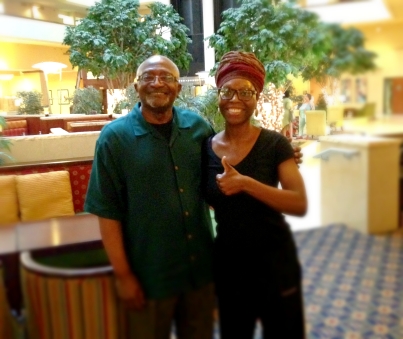
On July 29th Dr. Robert Bullard became the namesake for the Seirra Club’s annual Environmental Justice Award for outstanding work in the fight against environmental injustice.
August 6th thru the 8th in Houston, TX, Region 6 of the Environmental Protection Agency hosted the Texas Environmental Justice Community Training Workshop. EPA members came together with environmental advocacy group leaders to work on forming future initiatives to address environmental concerns in Arkansas, Louisiana, New Mexico, Oklahoma, Texas, and 66 Native American Tribal Nations. Very often over the course of the three days, emotions surged as community members stood and detailed their grim experiences living near refineries, or near a Superfund site. Organization representatives such as David Lopez, CEO of the Harris County Hospital District, Russ Poppe Directer of Operations of the Harris County Flood Control District, and Congresswoman Sheila Jackson Lee made known their obligations and accomplishments in the pursuit of addressing environmental injustice and extended themselves as service people to those in need. The workshop served to create a forum for provocative productive communication and awareness.
I’ll share with you some of the things I learned.
In cities such as Port Arthur, TX where oil and natural gas is processed those that live nearby become subjected to a phenomenon called gas flaring. Gas flaring occurs during the midst of production, processing, and exploration operations when there is a need to stabilize the pressure or flow of natural gas to help guard against the risk of explosion. Natural gas is mostly composed of methane which, as we all know or may have heard, is a greenhouse gas that contributes to global warming. The flares are loud and extremely hot and according to Environmentalist and Goldman Prize Winner, Mr. Hilton Kelly, are usually shot up during night time hours to attract the least amount of attention. Listen below as Mr. Kelly shares a story of his family’s degraded quality of life living in the underbelly of Port Arthur, TX.
Gas flaring is not so much the main problem as it is a symptom of a much larger problem that is our economic dependency on oil and gas for energy. One of the ways we satisfy our dependency on oil and gas is through a dangerous practice called fracking. In 2012 there was even a movie about fracking starring Matt Damon and John Krasinsky called ‘Promised Land’. Have you seen it?
Hydrolic fracturing or ‘fracking’ is the process of drilling and piping into the ground a solution of sand and chemicals to break open the shale and release the natural gas below the surface. Mercury, formaldehyde, and hydochloric acid are a few of the 600 chemicals used in the sand solutions. Over the course of this process, chemicals leach out of the piping system and into the surrounding groundwater causing contamination. Many of the chemicals are known to be carcinogens. Drinking this contaminated water has led to over 1,000 documented cases of illnesses in the form of respiratory, neurological, and nervous system damage. Hardly half of the fracking solution is every recovered from the earth, and what is recovered is left in pits to evaporate releasing harmful gasses into the air and creating acid rain. Over the US 72 trillion gallons of water and 360 billion gallons of chemical are used to recover only 300,000 barrels of natural gas.
During the course of the workshop, in a Q&A session I listened to a young man beg on the verge of tears for someone to help his mother who lives half a mile from a refinery and experiences serious health issues. He told the crowd and the panel members about the heavy metals in her liver and how they lacked the financial resources to have her see a doctor. He told us that they did not have the means to prove it, but that he was certain she was a victim of the refinery’s pollution.
The thing about environmental abuse is usually the ones who find themselves directly in harms way are those who because of their low economic status have hardly any choice but to live in the environmentally outcasted areas of town. It is a fact that the black and Latino demographic over South Central US are disproportionately affected by pollution.
As an undergraduate at the historically black university Prairie View A&M, I became aware of an initiative to build a landfill not even 5 miles from school. This landfill would create a stench in the air on campus, leak lechate into the ground and groundwater and weaken the prestige of our school. This was my first experience with environmental injustice. Our student body came together to protest and make our dissatisfaction known before the Waller County Courthouse. Even the likes of Quanell X and Minnijean Brown Trickey stepped in to offer their voices as support. In the most recent court hearing, pleas to transfer the location of the Highway 6 Landfill were denied and the organization instrumental in resisting the landfill is facing a lawsuit.
Research Analyst, Andy Zellinger of the Louisiana Bucket Brigade also had a story of minority environmental undermining. He gave an account of mapping in such a way that camouflages low income areas of New Orleans subjected to pollution from the petrochemical industry by grouping stats by parish rather than zip code. The Brigade website offers a more accurate iWitness Pollution Map.
In an intimate ‘breakout’ session workshop participants had the opportunity to hear from a lady named Jacquelyn Young, Director of the San Jacinto River Coalition. Ms. Young told us her story of severe health complications living near the waste pits that initially collected pollutants produced by the Champion Paper Mill. Due to the neglect of the pits, dioxins and furans from the paper mill found their way into the river, the drinking water, and the food chain. Jacquelyn Young told us of her experience with emaciation, loss of hand function and other health debilitations due to subjection to the Superfund site. Many in the local area test positive for heavy metals and suffer from poor health, some even from a rare form a cancer called multiple myeloma. Seafood from the San Jacinto River are widely exported and while local residents know not to consume, the seafood is exported without any warning labels.
Toxicologist, Latrice Babin compared the process of purging the earth beneath a Superfund site to sucking a smear of peanut butter from a jar through a straw. She says that the methods in place are often ineffective and the toxins are difficult to remove. This is the case with many Superfund sites like the San Jacinto Waste Pits; the sites may get cleaned up, but toxins are still left behind.
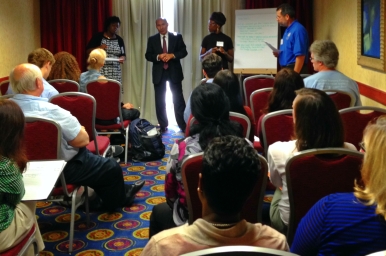
An intimate breakout session with Latrice Babin – Toxicologist, David Lopez – Harris County Health District CEO, and Arturo Blanco – HDHHS Bureau Cheif.
One thing became very clear to me over the course of the workshop. The Earth is suffering, and its people are suffering as a result.
After such an eye-opening experience, I am left with this hard-hitting question: What will it take to turn our conversations into action? What will it take to put an end not only to the individual occurrences of environmental injustice, but to end the cycles that bring us right back to the same crisis over and over? And how do we as individuals help to shoulder the responsibility of addressing a problem that is much bigger than any one of us?
Karen Savage of Bridge The Gulf shared with me her desire that those who feel a sense of obligation to stand up for environmental affairs, do so. She says that whatever level of skill you have, great or small, you must offer. She implores us to know that this is a cause the deserves to have those who will take it up.
I would say that the predicament we have gotten ourselves into is one where we’ve integrated into our lives a sort of dependency on practices that hurt the environment to the point where it is more than a little hard to quit harmful practices because the sacrifice would be major lifestyle shifts for all of us. Not only that but due to our marring actions the Earth’s automatic mechanisms for stabilizing and self-repair seem to be disrupted.
However, no matter how great the cost of repair may seem, now more than ever, I believe that it is a cost we can come together to repay. I do believe that the first step of many is to refuse to ever give up caring.

